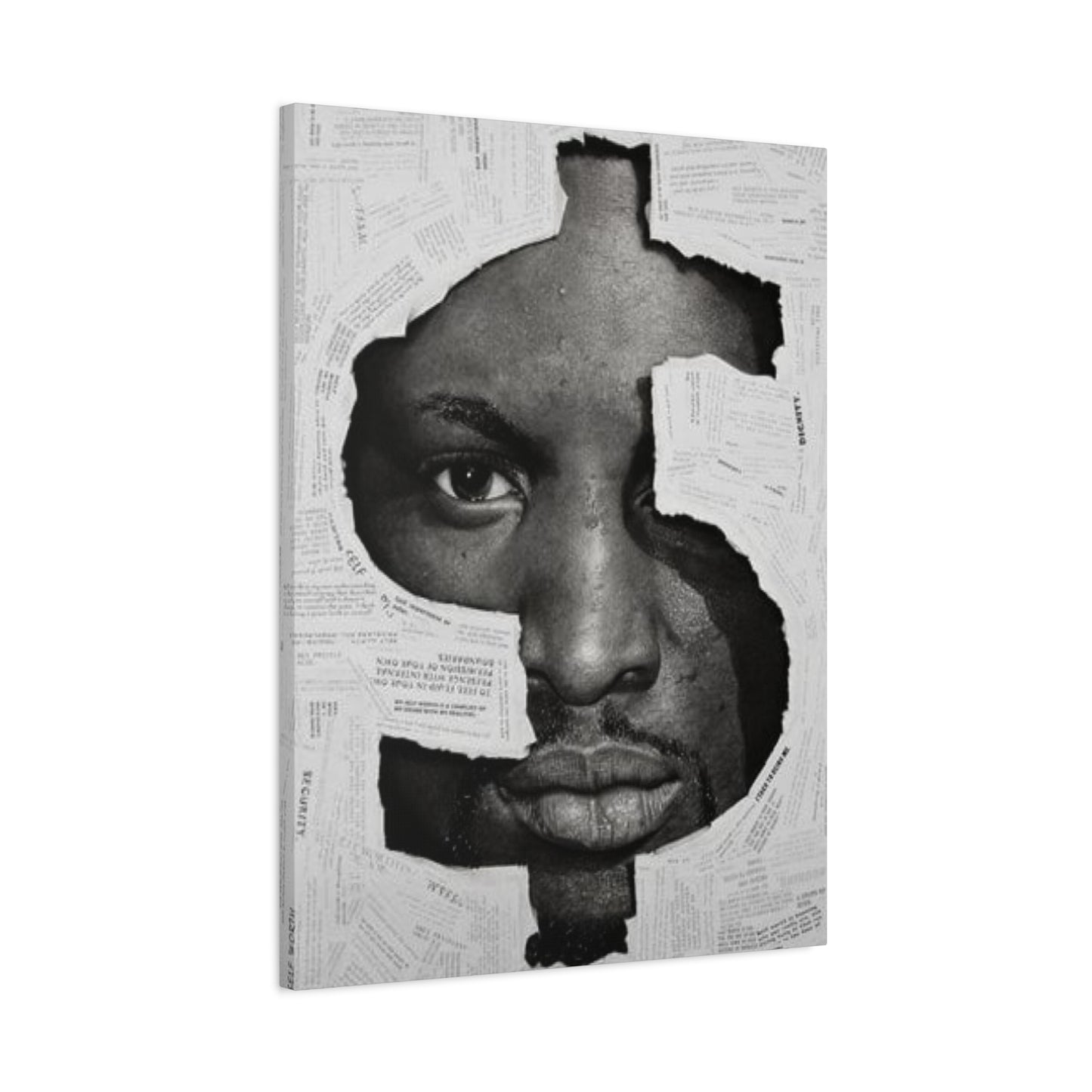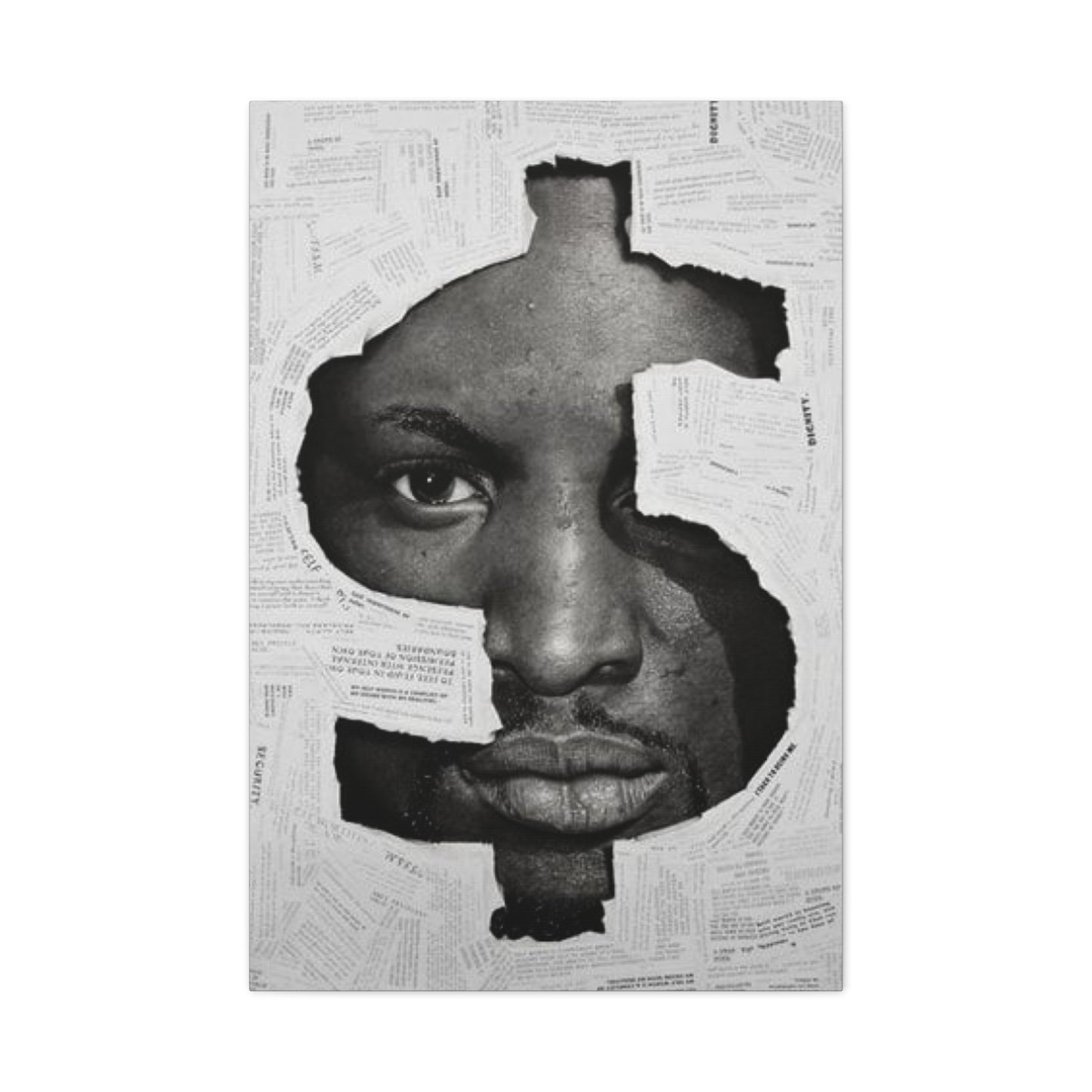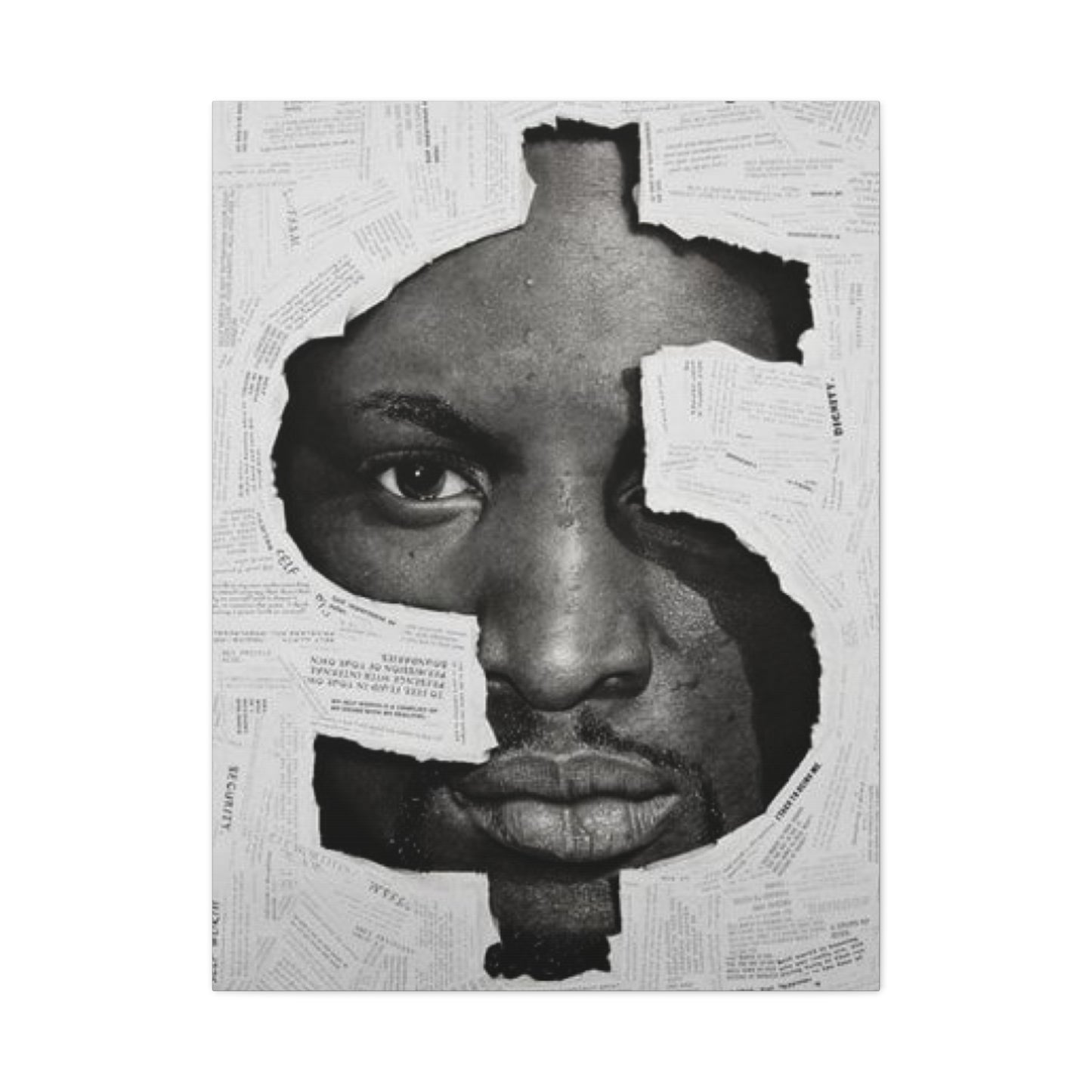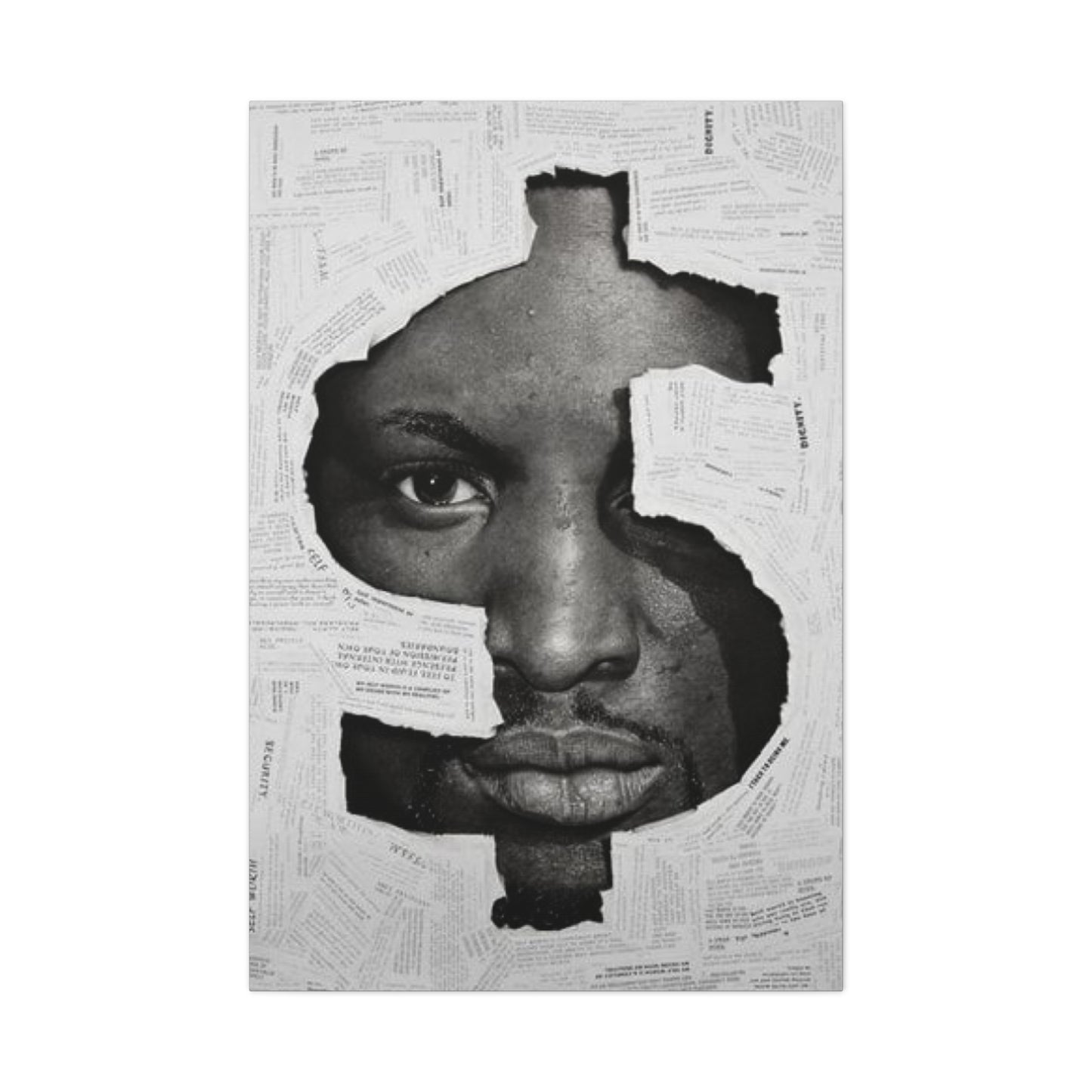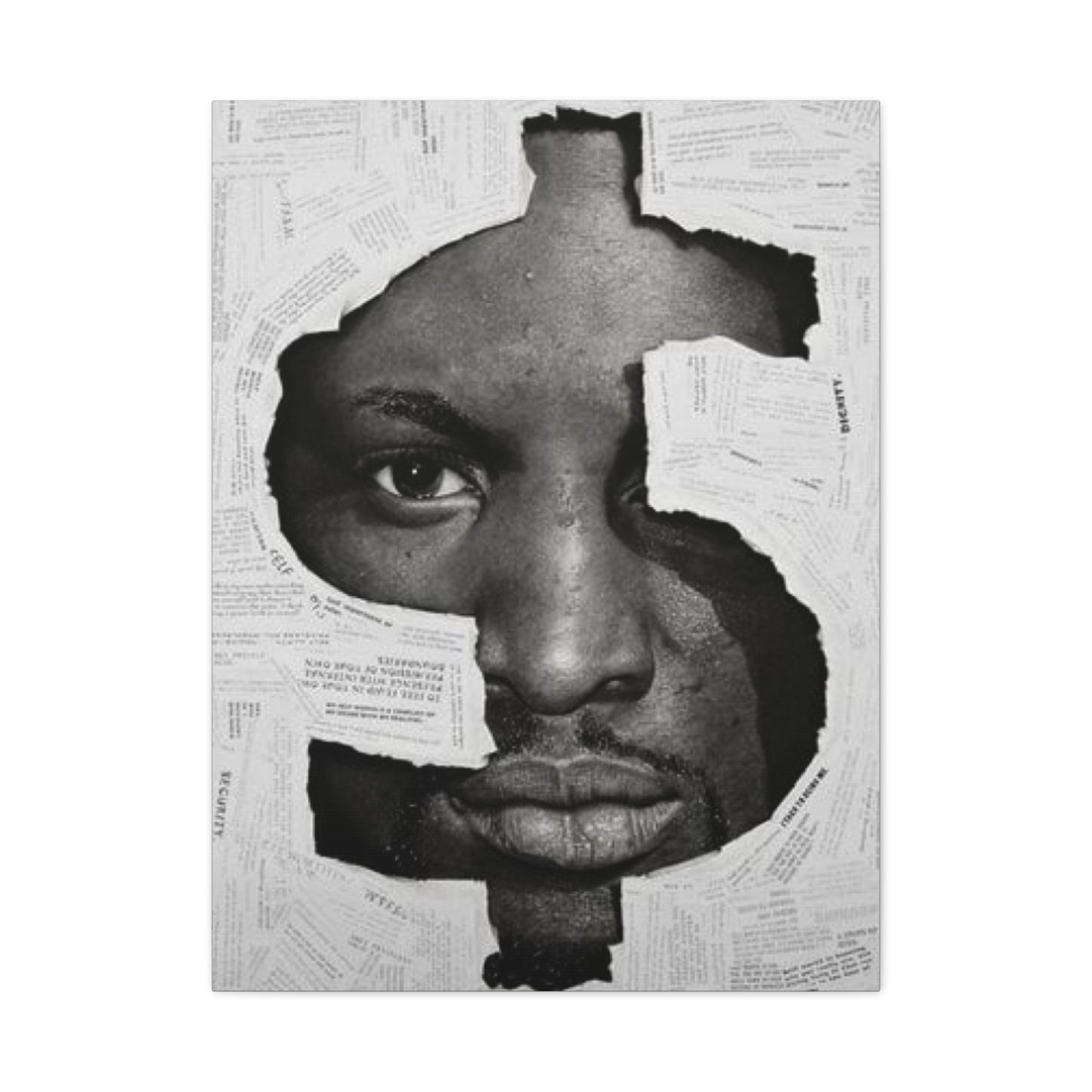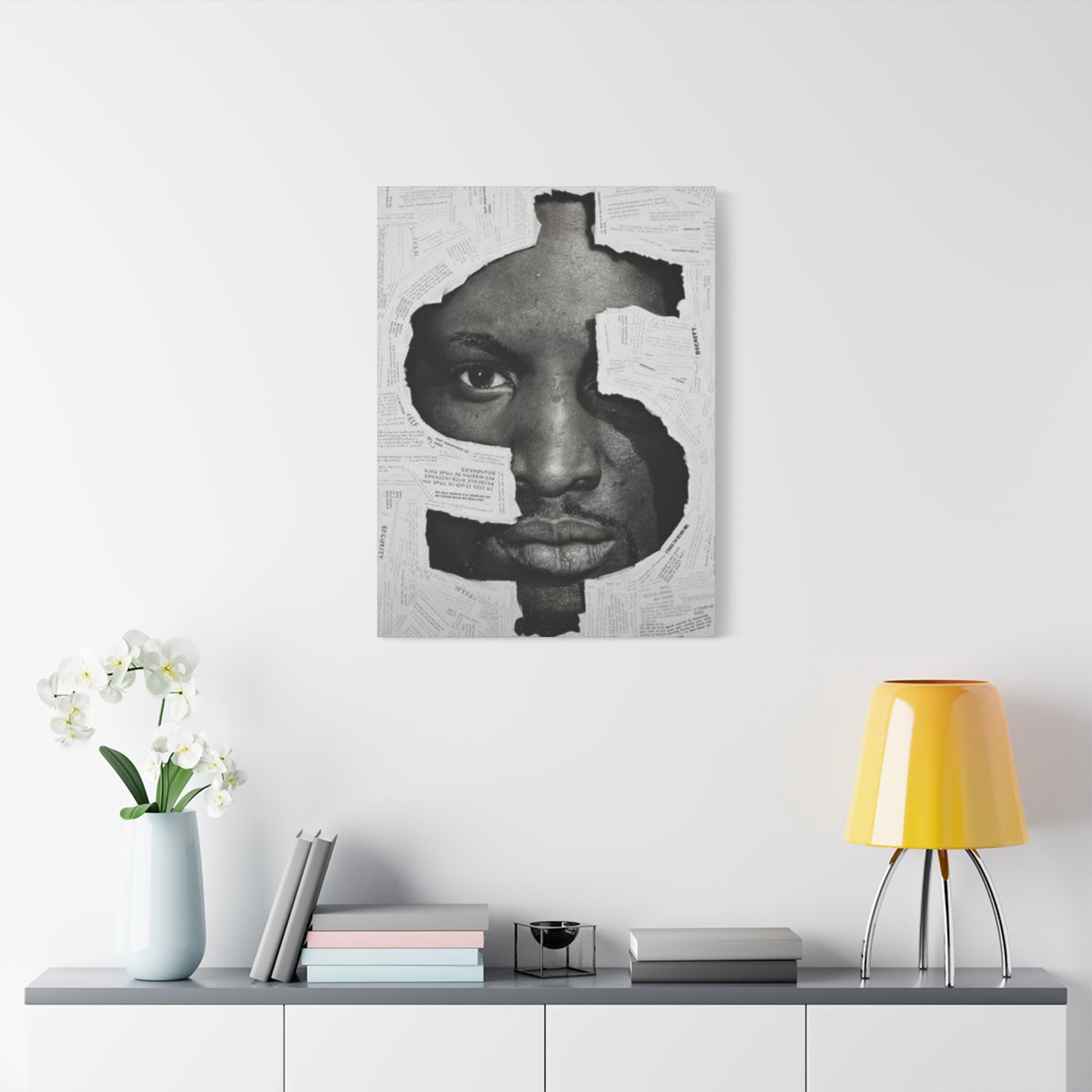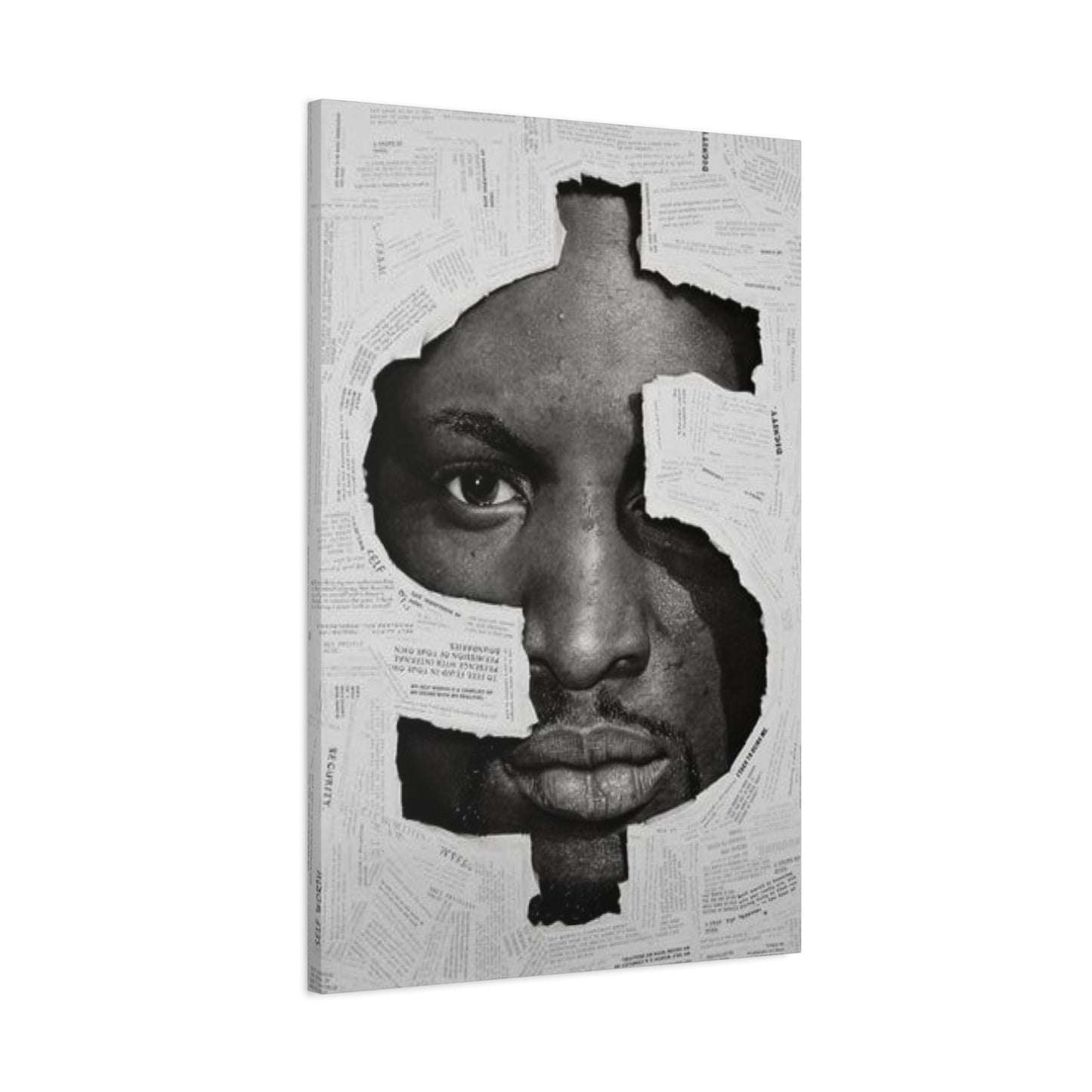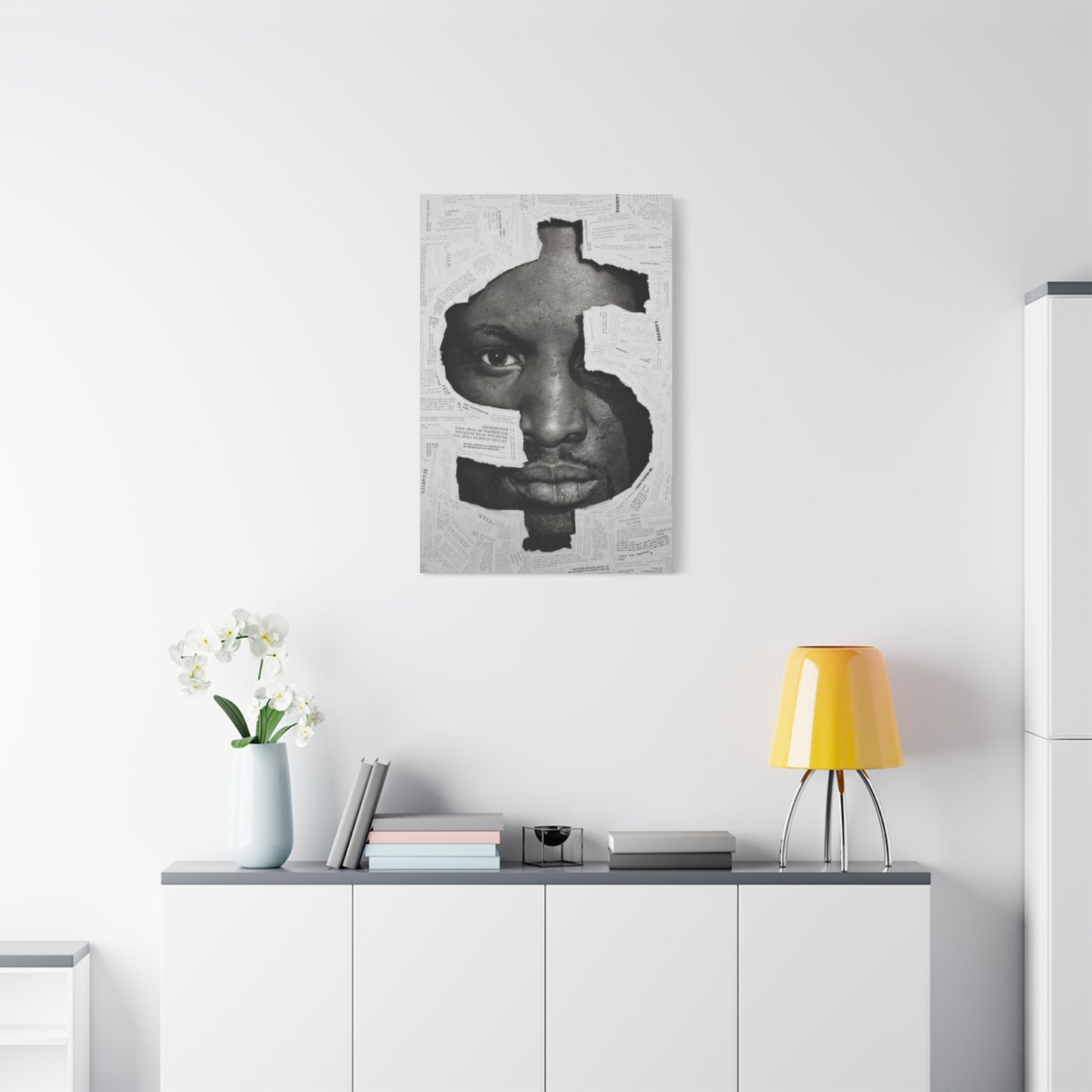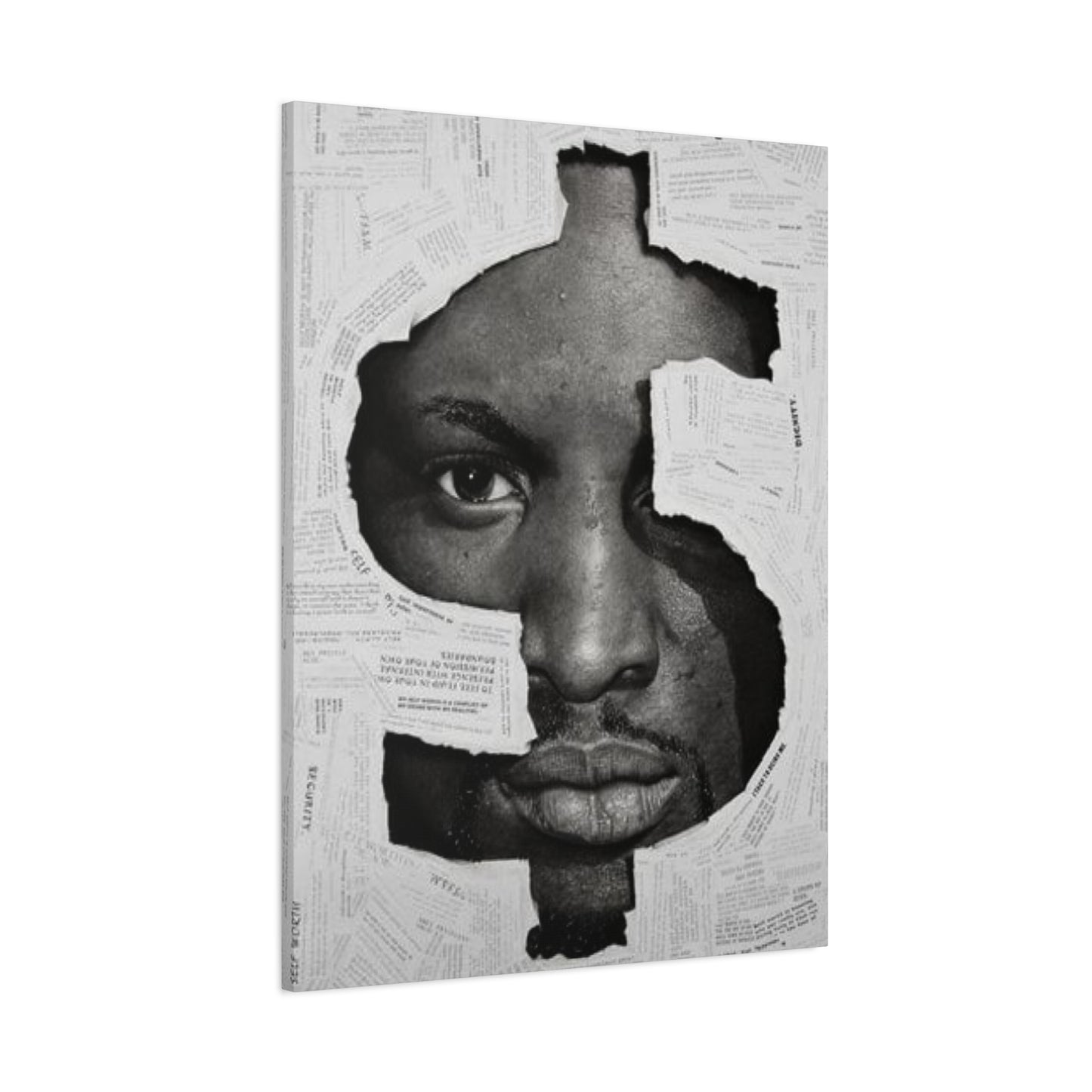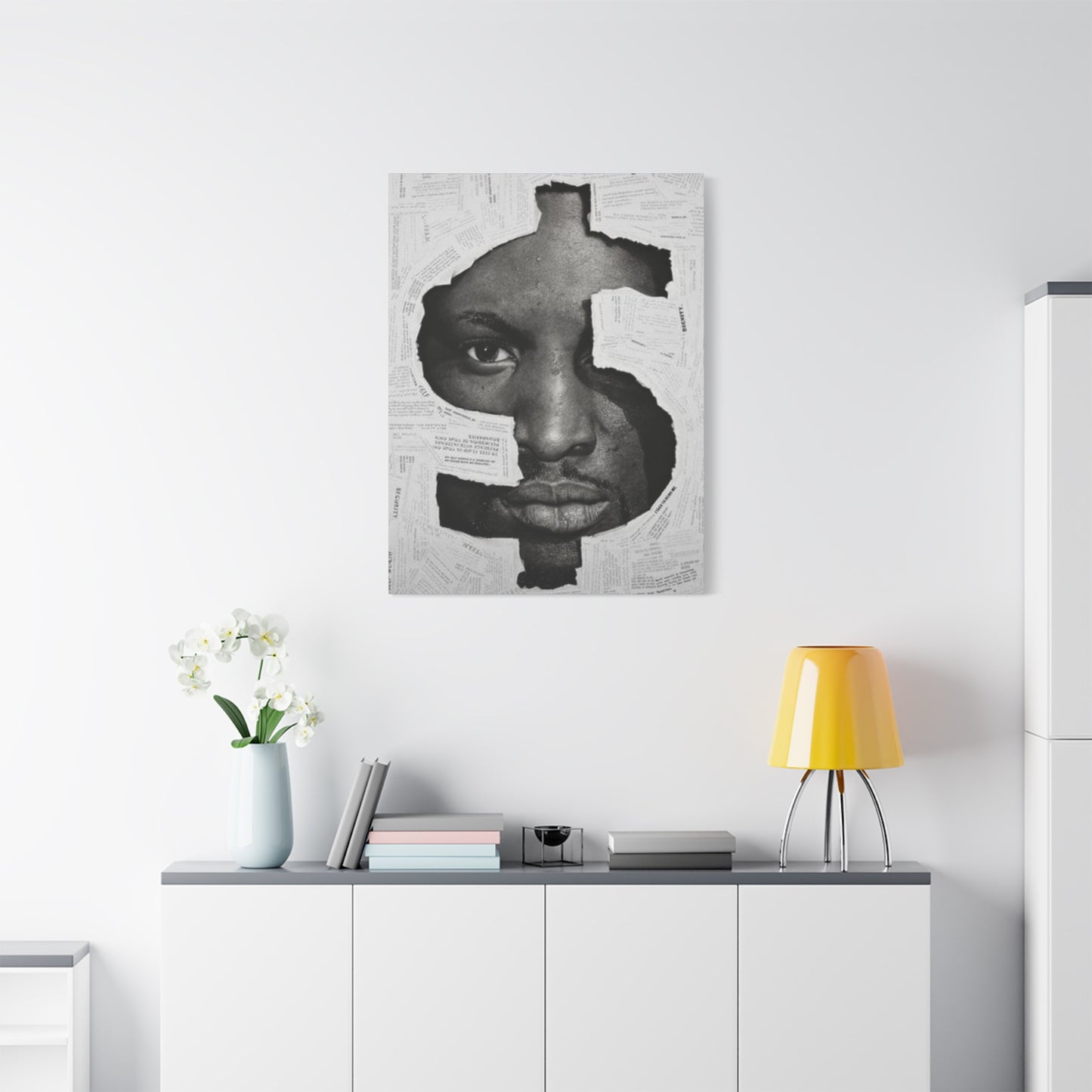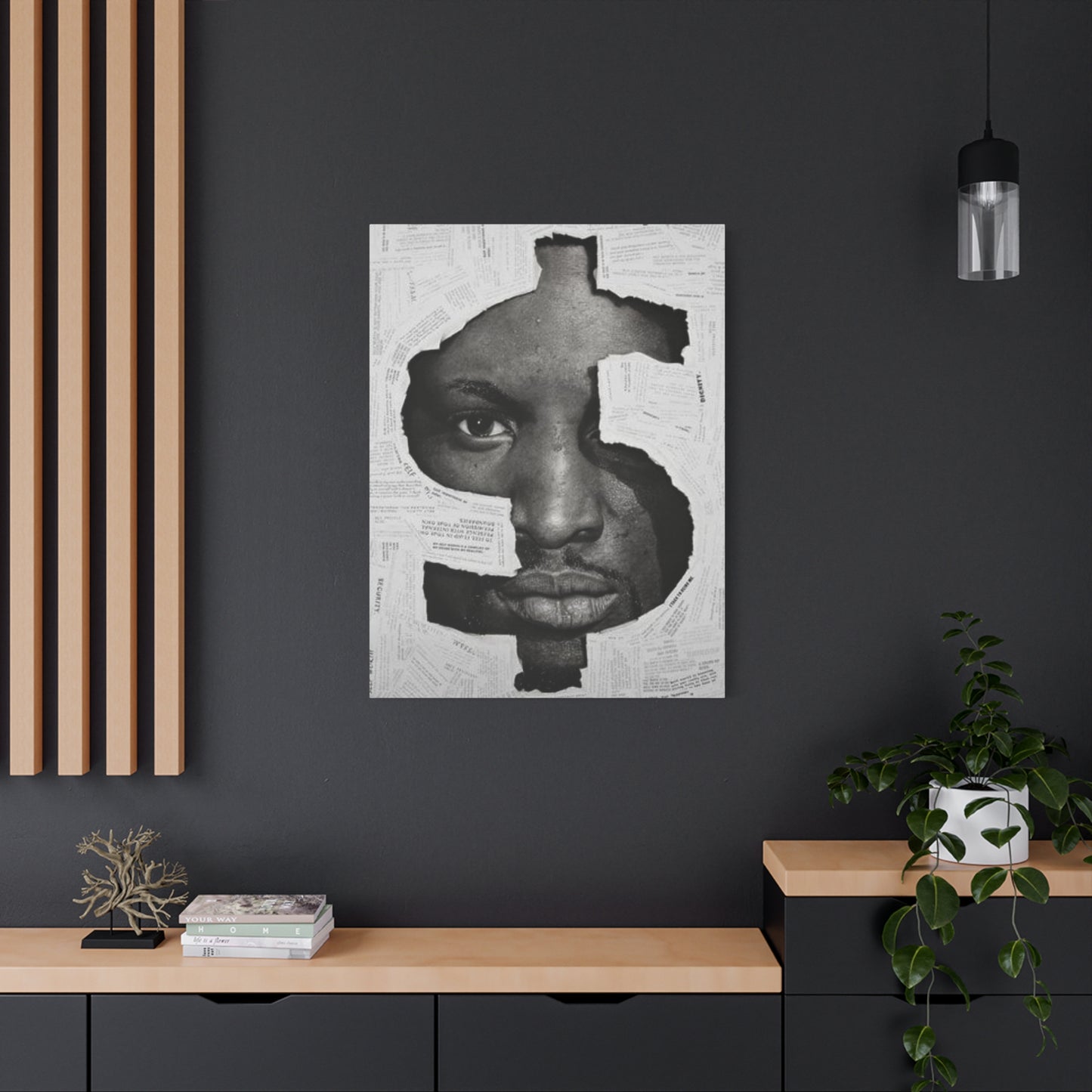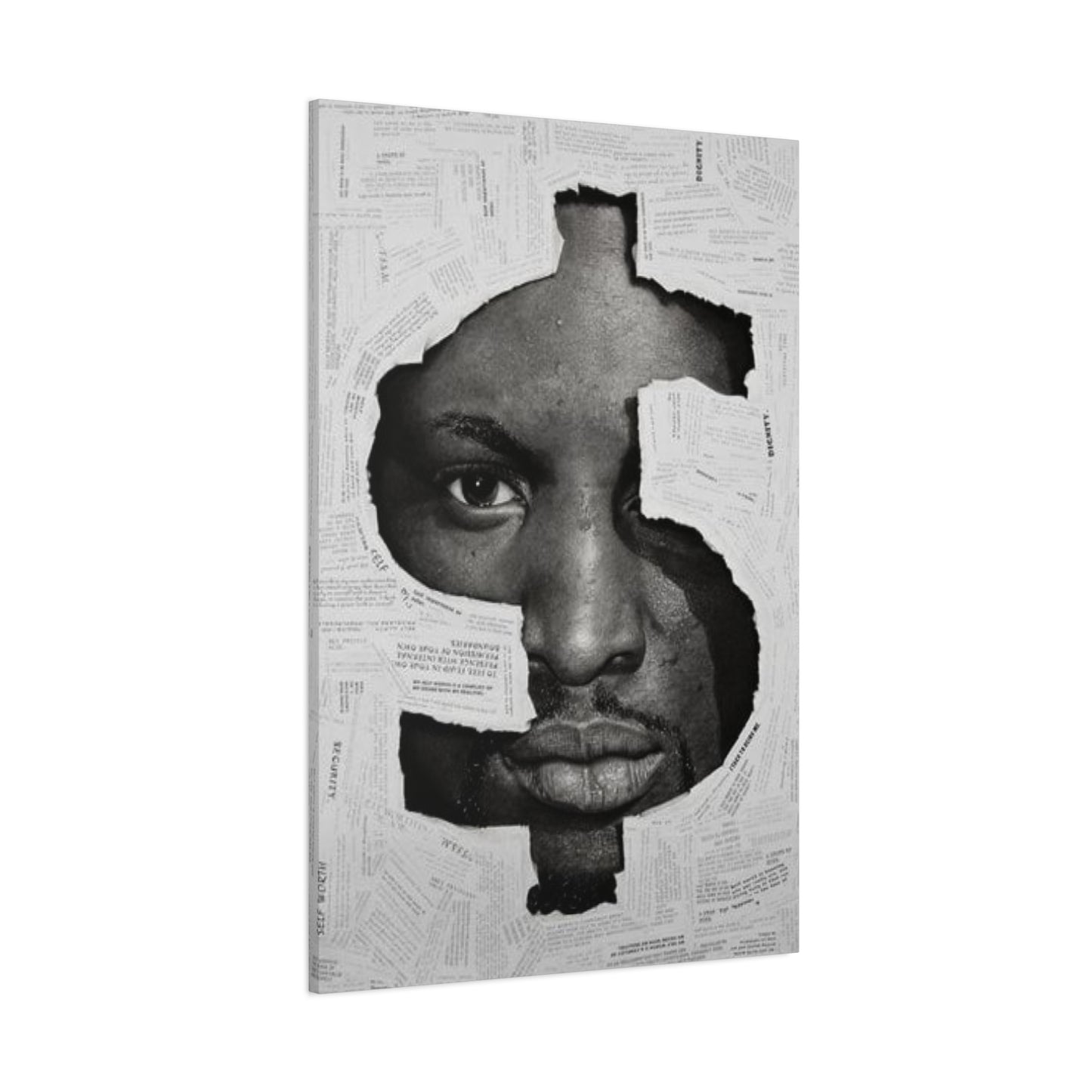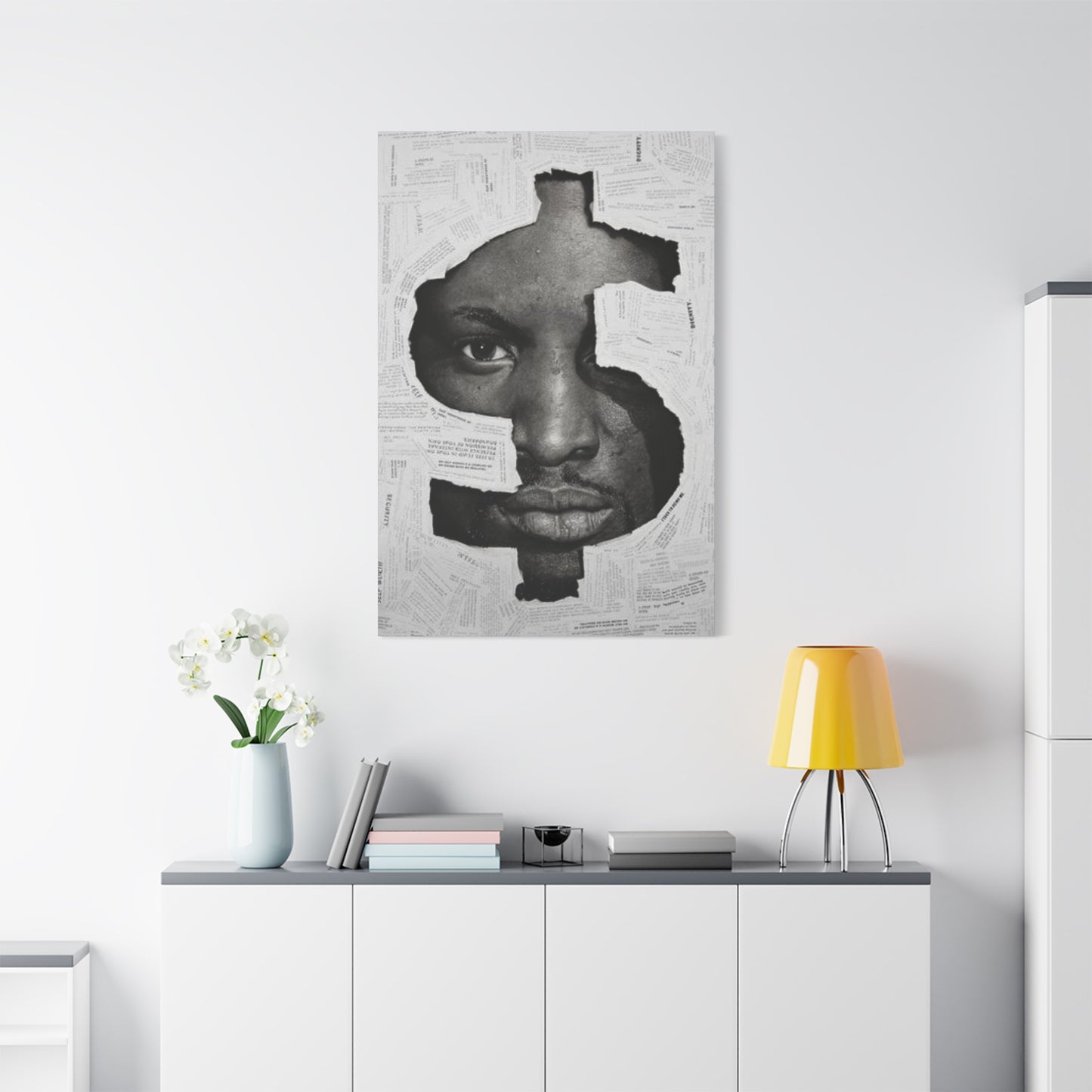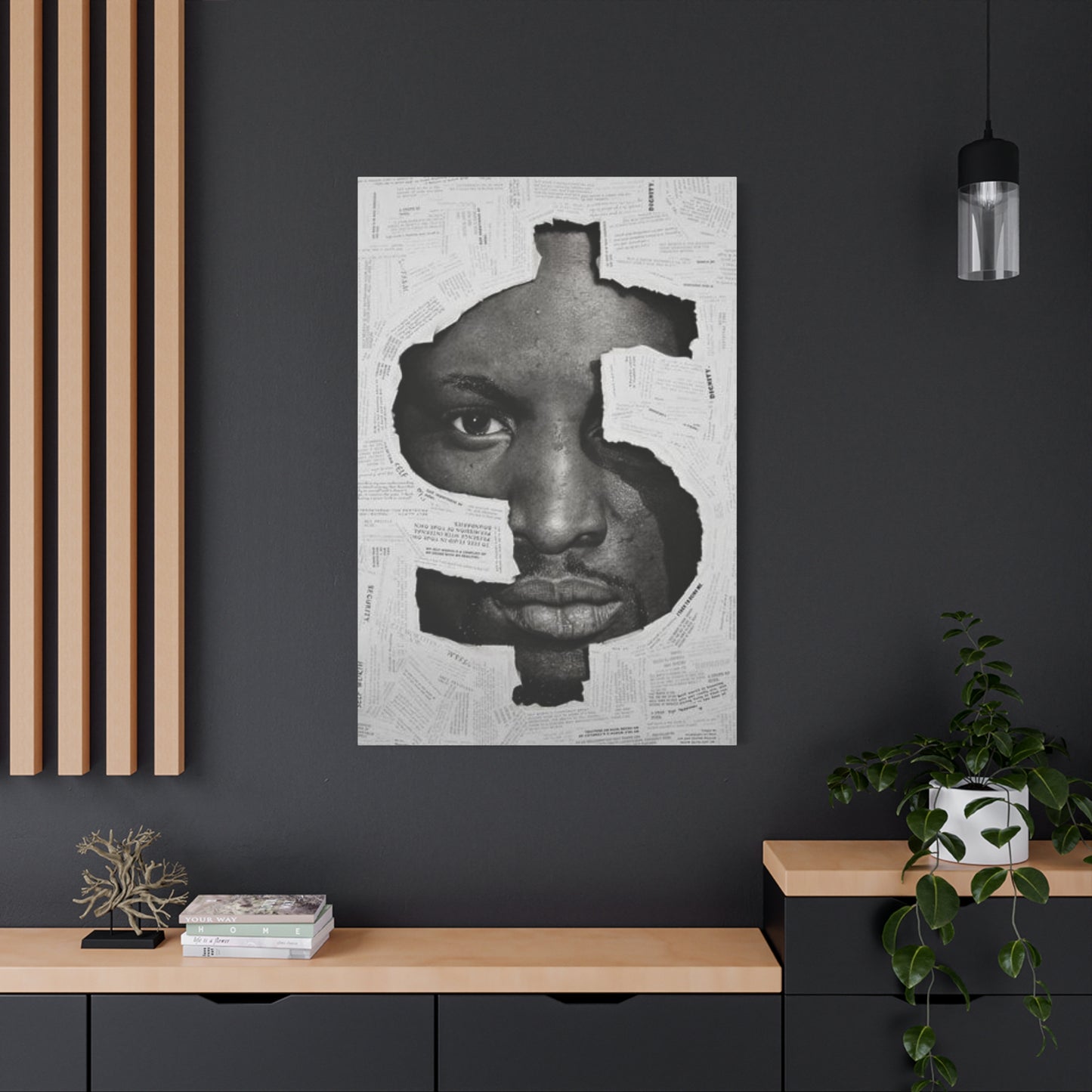Dollar Sign Mixed Media Wall Art: Creative Money-Themed Artwork for Modern Homes
Dollar sign mixed media wall art has emerged as one of the most captivating trends in contemporary home decoration and artistic expression. This fascinating art form combines various materials, textures, and techniques to create visually stunning pieces that celebrate monetary symbols while adding sophistication to any environment. The growing fascination with currency-themed artwork reflects our modern relationship with money, success, and prosperity, making these pieces both aesthetically pleasing and culturally relevant.
Mixed media artworks featuring dollar signs represent more than just decorative elements; they embody aspirations, achievements, and the entrepreneurial spirit that drives many individuals today. These artistic creations utilize diverse materials such as canvas, wood, metal, fabric, paper, and various other mediums to construct layered compositions that tell stories about financial success, ambition, and the American dream. Artists worldwide have embraced this concept, creating unique interpretations that range from subtle and sophisticated to bold and provocative.
The appeal of dollar sign mixed media wall art extends beyond its visual impact. These pieces serve as conversation starters, motivational reminders, and symbols of personal or professional achievements. Whether displayed in corporate offices, home studies, retail establishments, or personal collections, these artworks command attention and convey messages about success, determination, and financial literacy. The versatility of mixed media techniques allows artists to experiment with different styles, from minimalist approaches to elaborate, multi-dimensional compositions.
Contemporary artists have discovered innovative ways to incorporate traditional artistic techniques with modern materials and concepts. The dollar sign, as a universal symbol of currency and commerce, provides a familiar yet versatile subject matter that resonates with diverse audiences. This accessibility, combined with the endless possibilities offered by mixed media approaches, has contributed to the widespread adoption of currency-themed artwork in both residential and commercial settings.
The cultural significance of dollar sign artwork extends beyond mere decoration. These pieces often reflect societal attitudes toward money, success, and material prosperity. Some artists use currency symbols to critique consumerism and capitalism, while others celebrate entrepreneurship and financial achievement. This duality makes dollar sign mixed media wall art particularly compelling, as viewers can interpret these pieces according to their own perspectives and experiences.
Historical Context and Evolution of Money-Themed Artwork
The representation of money and currency in art has deep historical roots that stretch back centuries. From ancient civilizations depicting coins and precious metals in frescoes and sculptures to Renaissance painters including monetary symbols in their masterpieces, artists have long been fascinated by the visual and symbolic power of currency. The modern dollar sign, derived from the Spanish peso symbol, has become one of the most recognizable icons in contemporary culture, making it a natural subject for artistic interpretation.
During the industrial revolution, artists began incorporating themes of commerce and trade into their work, reflecting the changing economic landscape of their times. The emergence of capitalism as a dominant economic system provided new inspiration for creative expression, with money and financial symbols becoming increasingly prominent in artistic discourse. This historical progression laid the groundwork for contemporary artists to explore currency themes in their mixed media creations.
The pop art movement of the 1950s and 1960s marked a significant turning point in the artistic treatment of monetary symbols. Artists like Andy Warhol revolutionized the way society viewed commercial imagery, elevating everyday symbols and consumer products to the level of fine art. This movement directly influenced the development of contemporary dollar sign artwork, encouraging artists to explore the aesthetic and cultural significance of currency symbols in new and innovative ways.
The evolution of mixed media techniques during the late twentieth and early twenty-first centuries provided artists with unprecedented opportunities to experiment with materials and approaches. Traditional painting and sculpture gave way to more complex, multi-layered compositions that could incorporate diverse elements such as found objects, digital components, textural materials, and unconventional surfaces. This technical evolution perfectly complemented the conceptual exploration of monetary themes, resulting in the sophisticated dollar sign mixed media wall art we see today.
Digital technology has further expanded the possibilities for currency-themed artwork. Artists can now combine traditional materials with digital elements, creating hybrid pieces that bridge the gap between physical and virtual representations of money. This technological integration has opened new avenues for creative expression while maintaining the tactile, three-dimensional qualities that make mixed media art so appealing to collectors and enthusiasts.
The globalization of financial markets and the increasing prominence of digital currencies have added new layers of meaning to dollar sign artwork. Contemporary pieces often reference these modern developments while maintaining connections to traditional concepts of wealth and prosperity. This historical continuity combined with contemporary relevance makes dollar sign mixed media wall art particularly compelling for today's audiences.
Understanding Mixed Media Techniques and Materials
Mixed media art represents one of the most versatile and exciting approaches to contemporary artistic creation. This technique involves combining multiple materials, mediums, and methods within a single artwork, creating rich, layered compositions that offer visual complexity and textural interest. When applied to dollar sign themes, mixed media techniques allow artists to explore the multifaceted nature of money and currency through diverse materials and approaches.
The foundation of successful mixed media artwork lies in understanding how different materials interact and complement each other. Traditional painting mediums such as acrylics, oils, and watercolors can be combined with unconventional materials like metal leafing, fabric, paper collages, and three-dimensional objects. This combination creates depth, texture, and visual interest that cannot be achieved through single-medium approaches.
Canvas preparation plays a crucial role in mixed media dollar sign artwork. Artists must consider the weight and absorbency of their chosen surface, as well as its ability to support multiple layers of different materials. Heavy-duty canvases or wooden panels often provide the best foundation for complex mixed media compositions, allowing for the application of heavier materials without compromising structural integrity.
Layering techniques form the backbone of effective mixed media art. Artists begin with base layers that establish the overall composition and color scheme, then gradually add successive layers of different materials and textures. Each layer must be properly sealed and dried before the next application, ensuring long-term stability and preventing unwanted chemical reactions between different mediums.
Adhesion methods vary depending on the materials being combined. Traditional art mediums, specialized glues, mounting tapes, and mechanical fasteners all have their place in mixed media construction. Understanding which adhesion method works best for specific material combinations is essential for creating durable, long-lasting artworks that maintain their integrity over time.
Color theory becomes more complex in mixed media applications, as different materials may reflect and absorb light differently. Artists must consider how metallic elements, matte surfaces, glossy finishes, and textured materials will interact under various lighting conditions. This consideration is particularly important for dollar sign artwork, where metallic elements often play a significant role in conveying themes of wealth and prosperity.
Finishing techniques for mixed media dollar sign wall art require careful consideration of protection and presentation. Varnishes, sealers, and protective coatings must be compatible with all materials used in the composition. Some mixed media pieces may require custom framing solutions that accommodate three-dimensional elements while providing adequate protection from environmental factors.
Design Principles for Currency-Themed Compositions
Creating effective dollar sign mixed media wall art requires a thorough understanding of fundamental design principles and their application to currency-themed compositions. The dollar sign itself presents unique design challenges and opportunities, as it must remain recognizable while serving as the foundation for complex artistic interpretations. Successful compositions balance the iconic nature of the currency symbol with innovative artistic expression.
Proportion and scale considerations are paramount when designing dollar sign artwork. The symbol must be sized appropriately for its intended viewing distance and setting, while maintaining its visual impact and recognizability. Large-scale pieces intended for corporate environments may feature bold, prominent dollar signs, while smaller residential pieces might employ more subtle proportional relationships that integrate the symbol into broader compositional frameworks.
Color selection for currency-themed artwork requires careful consideration of cultural associations and psychological impact. Traditional green, associated with American currency, remains popular but need not limit artistic expression. Contemporary artists experiment with gold, silver, copper, and other metallic tones to convey different aspects of wealth and prosperity. Contrasting colors can create dramatic visual impact, while monochromatic schemes may emphasize texture and form over color relationships.
Compositional balance in dollar sign mixed media art involves managing the visual weight of different elements while maintaining focus on the central currency theme. The dollar sign itself often serves as a focal point, but surrounding elements must support and enhance rather than compete with this central symbol. Asymmetrical compositions can create dynamic visual interest, while symmetrical arrangements may convey stability and tradition.
Movement and rhythm within currency-themed compositions guide the viewer's eye through the artwork and create visual engagement. Repetitive elements, such as smaller currency symbols or related motifs, can establish rhythm while directional lines and shapes create movement. These design elements work together to prevent static compositions and maintain viewer interest over extended periods.
Texture plays a particularly important role in mixed media dollar sign artwork, as the combination of different materials naturally creates varied surface qualities. Smooth metallic elements might contrast with rough, organic materials, while raised three-dimensional components add sculptural interest to predominantly flat compositions. These textural variations create visual depth and tactile appeal that enhance the overall viewing experience.
Unity and harmony in complex mixed media compositions require careful coordination of all visual elements. While variety and contrast create interest, underlying unity ensures that the artwork functions as a cohesive whole rather than a collection of disparate parts. This balance is particularly challenging in mixed media work, where diverse materials and techniques must be integrated into unified artistic statements.
Contemporary Artistic Movements and Influences
The development of dollar sign mixed media wall art has been significantly influenced by various contemporary artistic movements, each contributing unique perspectives and techniques to this evolving art form. Understanding these influences provides insight into the rich cultural and artistic context that shapes currency-themed artwork today.
Street art and graffiti culture have had a profound impact on contemporary dollar sign artwork. The urban environment, where money and commerce intersect with artistic expression, has produced a generation of artists comfortable with incorporating financial symbols into their work. The bold, graphic approach typical of street art translates well to mixed media applications, where spray paint, stencils, and found materials create authentic urban aesthetics.
Pop art's influence on currency-themed artwork cannot be overstated. The movement's celebration of consumer culture and commercial imagery directly paves the way for contemporary artists to explore monetary themes without apology or irony. The pop art approach to repetition, bold colors, and commercial imagery continues to inform dollar sign artwork, particularly in pieces intended for commercial or retail environments.
Conceptual art movements have encouraged artists to explore the deeper meanings and cultural significance of currency symbols. Rather than simply depicting dollar signs for their visual appeal, contemporary artists often embed complex ideas about capitalism, consumerism, inequality, and financial literacy within their currency-themed compositions. This intellectual approach adds layers of meaning that extend beyond surface aesthetics.
Installation art has influenced the scale and presentation of dollar sign mixed media work. Large-scale installations featuring currency themes have demonstrated the power of immersive artistic experiences, encouraging smaller-scale mixed media artists to consider how their work functions within larger environmental contexts. This influence has led to more ambitious and spatially aware currency-themed compositions.
Digital art and new media have opened new possibilities for incorporating technology into traditional mixed media approaches. LED elements, digital displays, interactive components, and augmented reality features are increasingly being integrated into currency-themed artwork, creating hybrid pieces that bridge physical and digital realms. This technological integration reflects the increasing digitization of financial systems and currency.
Minimalism's influence on dollar sign artwork appears in pieces that reduce currency symbols to their essential forms, emphasizing clean lines, simple compositions, and restrained color palettes. This approach creates sophisticated, elegant pieces that convey themes of prosperity and success through understatement rather than ostentation. The minimalist approach appeals to contemporary audiences seeking refined artistic expression.
Environmental and sustainable art movements have encouraged artists to consider the materials and processes used in creating currency-themed artwork. Recycled materials, sustainable production methods, and commentary on consumption patterns have become increasingly important considerations for contemporary artists working with monetary themes. This environmental consciousness adds new dimensions to traditional currency-themed art.
Material Selection and Preparation Techniques
The success of dollar sign mixed media wall art largely depends on careful material selection and proper preparation techniques. Each material brings unique properties, visual qualities, and handling requirements that must be understood and respected to achieve professional results. The variety of available materials allows artists to create pieces ranging from subtle and sophisticated to bold and dramatic.
Canvas and substrate selection forms the foundation of any mixed media project. Traditional stretched canvases work well for lighter compositions, but heavier mixed media pieces may require wooden panels, metal sheets, or composite boards that can support additional weight without sagging or warping. The choice of substrate affects not only structural integrity but also the overall aesthetic and texture of the finished piece.
Metallic materials play a crucial role in many dollar sign compositions, reflecting themes of wealth, prosperity, and financial success. Gold leaf, silver leaf, copper sheeting, and aluminum foils each offer different visual qualities and application requirements. These materials may be applied as accents, backgrounds, or primary compositional elements, depending on the artist's vision and the piece's intended impact.
Paper elements in mixed media dollar sign artwork can range from handmade papers with interesting textures to printed materials that reference currency, financial documents, or commercial imagery. The selection and preparation of paper elements require consideration of archival quality, color fastness, and compatibility with other materials in the composition. Proper sealing and protection ensure long-term stability.
Fabric and textile materials add softness and organic texture to currency-themed compositions. Canvas, burlap, silk, and synthetic materials each contribute different visual and tactile qualities. These materials may be used as backgrounds, textural elements, or collage components, but require proper preparation and adhesion methods to ensure permanent integration into the composition.
Paint and pigment selection for mixed media dollar sign artwork involves coordinating traditional art mediums with specialized products designed for specific applications. Acrylic paints offer versatility and fast drying times, while oil paints provide rich colors and extended working time. Specialty paints such as metallics, interference colors, and texture mediums expand creative possibilities.
Three-dimensional elements can transform flat dollar sign compositions into sculptural artworks. Found objects, custom fabricated components, and commercially available materials can all be incorporated into mixed media compositions. The selection and preparation of these elements require consideration of scale, proportion, and integration methods that maintain compositional unity.
Adhesives and bonding agents must be carefully selected based on the specific materials being combined. PVA glue, acrylic mediums, epoxy adhesives, and mechanical fasteners each have appropriate applications. Understanding the long-term stability and reversibility of different bonding methods is essential for creating durable artworks that can be properly conserved if necessary.
Color Theory and Palette Development
Color plays a fundamental role in the effectiveness and impact of dollar sign mixed media wall art. The psychological associations of different colors with money, success, and prosperity must be carefully considered alongside traditional color theory principles to create compelling and meaningful compositions. Understanding how colors interact with various materials and lighting conditions is essential for achieving desired visual effects.
Green remains the most immediately recognizable color associated with American currency, but contemporary dollar sign artwork need not be limited to this traditional association. Various shades of green, from deep forest tones to bright lime accents, can be employed to reference currency while maintaining artistic flexibility. The key is understanding how different greens read in combination with other colors and materials.
Metallic colors hold special significance in currency-themed artwork, as they directly reference precious metals and the intrinsic value historically associated with money. Gold, silver, copper, and bronze tones can be achieved through metallic paints, leaf applications, or actual metal elements. These colors create luxury associations while adding visual richness and reflective qualities that enhance lighting effects.
Neutral colors provide sophisticated foundations for dollar sign compositions while allowing metallic and accent colors to dominate. Grays, beiges, creams, and off-whites create elegant backgrounds that don't compete with focal elements. These neutral palettes appeal to contemporary audiences seeking refined artistic expression that complements modern environments.
Contrast relationships in dollar sign mixed media art can create dramatic visual impact and ensure symbol recognition. High contrast combinations, such as black and gold or white and silver, create bold, easily readable compositions suitable for large-scale applications. More subtle contrast relationships may be appropriate for sophisticated residential settings or intimate viewing environments.
Color temperature considerations affect the mood and atmosphere of currency-themed artwork. Warm colors such as golds, oranges, and warm browns create inviting, optimistic feelings associated with prosperity and success. Cool colors like blues, purples, and cool grays may convey sophistication, stability, and professional authority. Understanding these associations helps artists select palettes appropriate for their intended messages and audiences.
Saturation levels impact the intensity and sophistication of dollar sign compositions. Highly saturated colors create bold, attention-grabbing effects suitable for commercial environments or statement pieces. Desaturated or muted colors create more refined, sophisticated appearances that work well in professional settings or contemporary home environments. The level of saturation should align with the intended use and audience for the artwork.
Color harmony principles ensure that multiple colors work together effectively within currency-themed compositions. Complementary color schemes create dynamic contrast, while analogous schemes provide harmonious, unified appearances. Triadic and split-complementary schemes offer more complex relationships that can create sophisticated visual interest without sacrificing unity. Understanding these relationships is essential for creating professional-quality artwork.
Textural Elements and Surface Treatments
Texture plays a pivotal role in mixed media dollar sign wall art, adding visual interest, tactile appeal, and depth that cannot be achieved through color alone. The strategic use of textural elements enhances the viewing experience and creates sophisticated compositions that reward closer examination. Understanding how different textures interact and complement each other is essential for creating successful mixed media artwork.
Raised textures in dollar sign compositions can be created through various techniques and materials. Impasto painting techniques using heavy paint applications create organic, hand-crafted textures that add authenticity and artistic character. Modeling paste, texture gels, and specialized texture mediums allow artists to create controlled surface variations that enhance specific areas of the composition without overwhelming the overall design.
Metallic textures reference the traditional association between money and precious metals while adding visual richness and light-reflecting qualities. Hammered metal effects, patinated surfaces, and brushed metal finishes each create different visual impressions and tactile suggestions. These textures can be achieved through actual metal applications or convincing paint techniques that simulate metallic surfaces.
Fabric textures introduce organic, softer elements that contrast effectively with harder metallic and painted surfaces. Canvas, burlap, silk, and specialty fabrics each contribute unique textural qualities that can represent different aspects of commerce, trade, and economic activity. Proper integration of fabric elements requires careful consideration of adhesion methods and long-term stability.
Paper textures range from smooth, commercial finishes that might reference actual currency or financial documents, to handmade papers with organic, irregular surfaces. The layering of different paper textures creates depth and visual complexity while allowing for the incorporation of printed elements, text, or imagery that supports the currency theme.
Carved or etched textures can be created directly in substrates such as wood or composite panels, adding permanent textural elements that integrate seamlessly with applied materials. These techniques allow for precise control over texture placement and depth, creating sophisticated effects that enhance the overall composition without competing with focal elements.
Glossy and matte surface treatments create contrast relationships that enhance textural visibility and add visual interest. The strategic use of different sheen levels can guide viewer attention, create depth illusions, and enhance color relationships. Understanding how different surface treatments interact with lighting conditions is essential for achieving desired effects in various display environments.
Layered textures create complex, visually rich surfaces that reward close examination while maintaining overall compositional unity. The careful layering of different textural elements, from subtle surface variations to pronounced three-dimensional components, creates artwork that engages viewers on multiple levels and maintains interest over extended periods.
Compositional Strategies for Dollar Sign Artwork
Effective composition is crucial for creating dollar sign mixed media wall art that successfully communicates intended messages while maintaining visual appeal and artistic integrity. The dollar sign symbol itself presents both opportunities and challenges for compositional development, requiring careful consideration of placement, scale, and integration with supporting elements.
Central focal point compositions position the dollar sign as the primary visual element, with all other components supporting and enhancing this central focus. This approach creates strong, immediately recognizable currency-themed artwork suitable for environments where clear symbolic communication is important. Supporting elements must be carefully balanced to enhance rather than compete with the central symbol.
Multiple focal point compositions incorporate several dollar signs or related currency symbols to create more complex visual narratives. These compositions require careful attention to visual weight distribution and movement patterns to prevent confusion while maintaining overall unity. Repetition of currency symbols can create rhythm and reinforce thematic content.
Asymmetrical compositions create dynamic visual interest while maintaining balance through careful weight distribution. Placing the dollar sign off-center and balancing it with other compositional elements creates movement and prevents static, predictable layouts. This approach suits contemporary aesthetic preferences while allowing for creative interpretation of currency themes.
Symmetrical compositions convey stability, tradition, and authority through balanced, formal arrangements. The dollar sign may be centrally positioned with supporting elements creating mirror-image relationships, or multiple currency symbols may be arranged in symmetrical patterns. This approach appeals to conservative tastes and professional environments.
Layered depth compositions use overlapping elements, varying scales, and perspective techniques to create three-dimensional illusions within mixed media work. Currency symbols may appear to recede into background layers while other elements project forward, creating complex spatial relationships that engage viewers and encourage extended examination.
Border and frame compositions integrate the dollar sign into decorative border patterns or use currency symbols to frame other compositional elements. This approach allows for sophisticated integration of monetary themes without overwhelming the overall design. Border compositions work particularly well for artwork intended to complement existing decor.
Movement-based compositions use directional lines, flowing curves, and dynamic arrangements to create visual energy and excitement. Currency symbols may appear to move through the composition, suggesting economic activity, growth, or financial flow. This approach suits environments where energy and optimism are important atmospheric considerations.
Three-Dimensional Elements and Sculptural Components
The incorporation of three-dimensional elements transforms traditional flat dollar sign artwork into sculptural compositions that command attention and create powerful visual impact. These dimensional components add physical presence and tactile interest that cannot be achieved through two-dimensional techniques alone, making mixed media currency artwork more engaging and memorable.
Relief sculpture techniques allow artists to create raised dollar sign symbols that project from the artwork surface while maintaining overall wall-mounting compatibility. These dimensional symbols can be carved from wood, cast in metal or resin, or constructed from layered materials. The depth and scale of relief elements must be carefully coordinated with viewing distances and lighting conditions.
Found object integration introduces real-world elements that directly reference money, commerce, or financial activity. Coins, bills, calculators, and other finance-related objects can be incorporated into mixed media compositions, but must be properly prepared and sealed for long-term stability. The selection and placement of found objects requires consideration of scale, color relationships, and symbolic meaning.
Custom fabricated elements allow for precise control over dimensional components while ensuring perfect integration with overall compositions. These elements might include custom-cut metal dollar signs, carved wooden components, or cast resin elements that match specific design requirements. Fabricated components can be finished to complement existing materials and color schemes.
Wire and metal framework elements can create structural support for complex three-dimensional compositions while contributing linear elements that enhance overall design. Copper, brass, aluminum, and steel wires each offer different visual qualities and working properties. Proper finishing and protection ensure long-term appearance and prevent unwanted corrosion or discoloration.
Layered substrate techniques create dimensional effects through the strategic stacking and mounting of multiple canvas or panel layers. Different substrate thicknesses and mounting methods create varied projection distances that add visual interest and shadow effects. This technique allows for complex dimensional relationships while maintaining overall composition control.
Shadow effects created by three-dimensional elements add another layer of visual interest to currency-themed artwork. The positioning of dimensional components must consider how shadows will fall under different lighting conditions, ensuring that shadow patterns enhance rather than detract from overall compositions. Consistent lighting design becomes crucial for optimal presentation.
Installation considerations for three-dimensional dollar sign artwork include weight distribution, mounting methods, and clearance requirements. These pieces may require specialized hanging systems and wall preparations to ensure safe, secure installation. Dimensional components must be firmly attached to prevent separation or damage during transport and installation.
Digital Integration and Hybrid Approaches
Contemporary mixed media dollar sign wall art increasingly incorporates digital elements that bridge traditional artistic techniques with modern technology. These hybrid approaches create innovative artwork that reflects the digital transformation of financial systems while maintaining the tactile appeal of physical mixed media compositions.
LED integration allows for dynamic lighting effects that can enhance metallic elements, create color-changing displays, or add movement to otherwise static compositions. Battery-powered LED systems provide installation flexibility without requiring hardwired electrical connections. The selection and placement of LED components must be carefully coordinated with other compositional elements to ensure seamless integration.
Digital print elements can incorporate photographic imagery, computer-generated graphics, or manipulated currency imagery into mixed media compositions. High-quality archival printing ensures color stability and longevity, while various print substrates offer different textural qualities and integration possibilities. Digital elements must be properly sealed and protected when combined with other mixed media materials.
Interactive components using sensors, motion detectors, or touch-sensitive elements can create responsive artwork that changes based on viewer interaction. These features add engagement and novelty while referencing the interactive nature of digital financial systems. However, interactive components require consideration of maintenance, reliability, and power requirements for long-term installations.
Augmented reality features allow viewers to use mobile devices to access additional content or visual effects when viewing physical artwork. QR codes, image recognition markers, or specialized applications can unlock digital experiences that complement and enhance the physical artwork. This technology creates opportunities for layered storytelling and educational content.
Projection mapping techniques can transform static dollar sign artwork into dynamic, changing displays without permanently altering the physical composition. Specialized projectors and software create mapped visual effects that align precisely with physical elements, creating sophisticated multimedia presentations. However, projection systems require dedicated installation and maintenance considerations.
Hybrid printing techniques combine traditional printing methods with specialized applications such as conductive inks, thermochromic materials, or metallic foils. These technologies allow for the creation of printed elements that change appearance based on temperature, electrical current, or other environmental factors, adding dynamic qualities to otherwise static compositions.
Digital documentation and presentation tools allow for virtual galleries, online portfolios, and digital certificates of authenticity that enhance the marketability and collectibility of mixed media dollar sign artwork. Professional photography, 3D scanning, and virtual reality presentations create comprehensive digital records that support both marketing and conservation efforts.
Cultural Symbolism and Meaning in Currency Art
Dollar sign mixed media wall art operates within complex networks of cultural meaning and symbolism that extend far beyond simple visual representation. Understanding these symbolic layers is essential for creating artwork that communicates effectively with diverse audiences while respecting cultural sensitivities and interpretations.
The American Dream symbolism inherent in dollar sign imagery resonates strongly with audiences who associate currency symbols with opportunity, success, and upward mobility. Artwork that celebrates these positive associations appeals to entrepreneurs, business professionals, and individuals seeking motivation and inspiration. The visual representation of these concepts requires careful balance between aspiration and accessibility.
Capitalism and commerce references in currency-themed artwork can range from celebratory to critical, depending on artistic intent and audience considerations. Some pieces embrace the energy and opportunity associated with free-market systems, while others may critique inequality, excess, or environmental costs associated with unchecked capitalism. Artists must consider their intended message and audience when developing these themes.
Global economic symbolism extends beyond American currency to reference international trade, global markets, and economic interconnection. Mixed media pieces might incorporate multiple currency symbols, exchange rate references, or imagery that represents global commerce. This international perspective appeals to audiences engaged in global business or concerned with worldwide economic issues.
Success and achievement associations make dollar sign artwork popular in professional environments, corporate offices, and personal collections focused on motivation and goal-setting. These pieces serve as visual reminders of financial goals, business achievements, or personal prosperity aspirations. The artistic treatment of success themes can range from subtle and sophisticated to bold and declarative.
Wealth inequality commentary represents a more critical approach to currency symbolism, addressing societal concerns about income disparity, access to opportunity, and social justice. Artists working in this vein may use dollar sign imagery to highlight contrasts between wealth and poverty, questioning assumptions about money and worth. These pieces require sensitive handling of complex social issues.
Pop culture references in currency-themed artwork might incorporate imagery from movies, music, literature, or social media that reference money, success, or financial themes. These references create immediate connection with specific audiences while potentially dating the artwork to particular cultural moments. Understanding current and enduring pop culture associations helps inform artistic choices.
Historical perspectives on money and currency can add depth and educational value to dollar sign artwork. References to the gold standard, banking history, economic crises, or currency evolution provide context for contemporary financial systems. These historical elements appeal to collectors and audiences interested in economic education and historical awareness.
Market Analysis and Collector Perspectives
The market for dollar sign mixed media wall art has experienced significant growth as collectors and decorators seek artwork that reflects contemporary economic culture while offering sophisticated aesthetic appeal. Understanding market dynamics, collector preferences, and pricing factors helps both artists and buyers navigate this evolving segment of the art market.
Collector demographics for currency-themed artwork span diverse age ranges and professional backgrounds, but commonly include business professionals, entrepreneurs, investors, and individuals working in financial services. These collectors often seek artwork that reflects their professional identities while demonstrating artistic sophistication and investment potential.
Price ranges for dollar sign mixed media wall art vary significantly based on artist reputation, artwork size, complexity, and materials used. Entry-level pieces from emerging artists may start in the hundreds of dollars, while established artists commanding gallery representation may price similar pieces in the thousands. Limited editions and unique mixed media techniques can command premium pricing.
Investment potential for currency-themed artwork depends on various factors including artist trajectory, market demand, and broader economic conditions. Some collectors view these pieces as both decorative and investment opportunities, seeking artists with strong exhibition records and growing reputations. However, art investment requires careful research and professional guidance.
Gallery representation for artists creating dollar sign mixed media work has increased as dealers recognize growing collector interest in contemporary currency-themed art. Galleries specializing in pop art, contemporary mixed media, or business-focused clientele often represent artists working in this genre. Gallery relationships provide important validation and marketing support.
Corporate collections represent a significant market segment for currency-themed artwork, as businesses seek pieces that reflect their focus on financial success while creating professional, inspiring environments. Corporate buyers often purchase multiple pieces or commission custom work that incorporates company branding or specific thematic elements.
Online markets and digital platforms have democratized access to currency-themed artwork while creating new challenges around authenticity verification and quality assessment. Artists must develop strong online presences while maintaining professional standards for documentation, shipping, and customer service. Digital marketing becomes crucial for reaching appropriate audiences.
Auction results for established currency-themed artwork provide benchmarks for market valuation while indicating collector confidence in this art category. Successful auction performance validates artistic approaches and can significantly impact secondary market values. However, auction markets can be volatile and subject to broader economic conditions.
Installation and Display Considerations
Proper installation and display of dollar sign mixed media wall art is crucial for achieving optimal visual impact while ensuring long-term preservation and security. The three-dimensional nature of many mixed media pieces requires specialized mounting techniques and environmental considerations that differ from traditional flat artwork installation.
Wall preparation for mixed media currency artwork must accommodate the weight and dimensional requirements of complex compositions. Standard drywall may require reinforcement with backing boards or specialized fasteners for heavier pieces. Masonry and concrete walls offer superior support but may require specialized drilling and mounting hardware.
Mounting systems for three-dimensional mixed media work must distribute weight evenly while providing secure attachment points that won't damage either the artwork or mounting surface. Professional-grade hanging systems with adjustable components allow for precise positioning and future repositioning if necessary. Security considerations may require theft-resistant mounting for valuable pieces.
Lighting design significantly impacts the appearance and effectiveness of dollar sign artwork, particularly pieces incorporating metallic elements or three-dimensional components. Track lighting systems provide flexibility for adjusting illumination angles and intensity, while picture lights offer dedicated illumination without competing fixtures. LED technology provides energy efficiency and reduced heat output.
Environmental controls help protect mixed media artwork from damage caused by temperature fluctuations, humidity variations, and air pollutants. Climate-controlled environments extend artwork lifespan while maintaining optimal appearance. UV filtering on windows and light sources prevents fading and degradation of light-sensitive materials.
Clearance requirements ensure that three-dimensional elements don't interfere with normal activity while protecting both artwork and viewers from accidental contact. Minimum clearances depend on projection distances and traffic patterns in the installation location. High-traffic areas may require additional protection or modified mounting positions.
Security measures for valuable currency-themed artwork may include alarm systems, surveillance cameras, or specialized mounting hardware that prevents easy removal. Insurance considerations often require documentation of security measures and installation methods. Professional installation documentation supports insurance claims and conservation efforts.
Maintenance access allows for periodic cleaning, inspection, and conservation treatments without requiring complete reinstallation. Mixed media pieces may require different cleaning methods for various material components, making accessibility important for long-term care. Professional conservation should be conducted by specialists familiar with mixed media techniques.
Care and Maintenance of Mixed Media Artworks
The diverse materials and techniques used in dollar sign mixed media wall art require specialized care and maintenance approaches that differ significantly from traditional paintings or prints. Understanding proper maintenance procedures helps preserve artwork appearance and value while preventing costly conservation treatments.
Routine cleaning procedures for mixed media currency artwork must account for the different requirements of various materials within single compositions. Metallic elements may require specific cleaning products and techniques, while painted surfaces need different approaches. Fabric and paper components may be particularly vulnerable to inappropriate cleaning methods.
Dusting techniques should avoid static-generating materials that might attract additional debris or damage delicate surface elements. Soft, natural bristle brushes work well for textured surfaces, while microfiber cloths are appropriate for smooth areas. Compressed air can remove debris from recessed areas but must be used carefully to avoid damage.
Humidity control prevents warping, cracking, and other moisture-related damage that can affect mixed media compositions. Ideal relative humidity levels typically range between 45-55%, though specific materials may have different optimal ranges. Dehumidifiers or humidity control systems may be necessary in naturally humid climates.
Temperature stability prevents expansion and contraction cycles that can stress mixed media bonds and cause separation between different materials. Avoid locations near heating vents, air conditioning outlets, or areas subject to rapid temperature changes. Professional advice may be necessary for valuable pieces in challenging environments.
UV protection prevents fading and degradation of light-sensitive materials commonly used in mixed media work. Window films, UV-filtering glazing, or specialized lighting systems reduce harmful radiation exposure. Regular rotation of artwork away from direct sunlight helps minimize cumulative UV damage.
Professional conservation should be conducted by specialists experienced with mixed media techniques and materials. Attempting repairs without proper expertise can cause irreversible damage and significantly reduce artwork value. Documentation of conservation treatments maintains provenance and supports insurance claims.
Storage considerations for mixed media dollar sign artwork require protection from physical damage, environmental hazards, and pest intrusion. Custom storage boxes or wrapping systems should accommodate three-dimensional elements while providing adequate cushioning. Climate-controlled storage facilities offer optimal long-term preservation conditions.
Conclusion
Dollar sign mixed media wall art offers a bold and contemporary way to bring financial symbolism and modern creativity into your home décor. By blending various materials and artistic techniques, this style of artwork transforms the familiar dollar sign into a dynamic visual statement that can express themes of prosperity, ambition, and the complexities of wealth in today’s world. Whether you’re a finance enthusiast, an entrepreneur, or simply drawn to impactful design, dollar sign mixed media art adds an intriguing and thought-provoking element to your living space.
The strength of this artwork lies in its ability to balance symbolism with artistic innovation. The dollar sign, as a universally recognized icon, instantly conveys messages related to money, success, and value. When combined with mixed media techniques—such as layering textures, incorporating found objects, or using bold colors—the resulting piece becomes a conversation starter that goes beyond simple decoration. It invites viewers to consider the multifaceted nature of wealth and the cultural significance surrounding it.
From a design perspective, dollar sign mixed media art fits seamlessly into modern and eclectic interiors, adding depth, texture, and a splash of contemporary edge. Its versatility allows for both subtle, minimalist expressions or vibrant, statement-making installations. Placed in home offices, living rooms, or creative studios, these pieces motivate and inspire, reminding occupants of their goals and aspirations while adding a stylish focal point.
Moreover, incorporating money-themed art into your décor can also reflect a mindset of growth and abundance. It serves as a daily reminder of the value of hard work, financial literacy, and the importance of setting and achieving personal goals. The mixed media approach enhances this message by symbolizing the complexity and layered nature of wealth—beyond just numbers and currency.
In conclusion, dollar sign mixed media wall art is more than a decorative choice; it’s a creative celebration of ambition, prosperity, and modern artistic expression. By integrating these artworks into your home, you not only enhance your décor but also cultivate an environment that inspires motivation and success. Embrace the fusion of symbolism and creativity to make a powerful statement about wealth and aspiration in your living space.

















